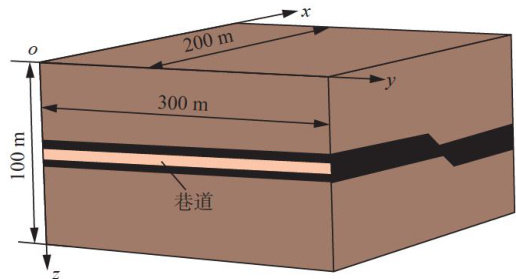基于CNN-LSTM的透射槽波勘探走向断层预测研究


打开文本图片集
中图分类号:TD178 文献标志码:A
Abstract:Transmited in-seam wave seismic exploration is an effective method for detecting geological structures and hazardous bodies in working faces,but it suffers from problems such as shallow exploration depth, lowresolution,and susceptibility to terrainand environmental noise.Toaddress these isues,deep learning technology was introduced into transmited in-seam wave seismic exploration to predict the location of strike-slip faults in working faces.A geological model of the strike-slip fault inthe working facewas established,and the elastic wave finite diference algorithm wasused to perform forward modeling of in-seam waves to generate a simulationdataset.A Convolutional Neural Network-Long Short-Term Memory(CNN-LSTM) modelwas constructed.CNN wasusedtoextractlocal featuresofthein-seam wavedata,andLSTMwasused tocapture the temporal dependencies in the in-seam wave data,thereby achievingcollaborativeanalysisof spatiotemporal features.The CNN-LSTM model was trained using the in-seam wave simulation dataset.The predicted root mean square error was 4.3934m ,the mean absolute error was 2.9875m ,and the coefficient of determination was 0.988 3,verifying the model's high prediction accuracy and good generalization capability. The CNN-LSTM model was then fine-tuned using transfer learning and validated using transmited in-seam wave exploration data from the 506 working face of a mine in Inner Mongolia. The results showed that the predicted fault location and strike were consistent with the actual position revealed by mining,and the prediction performance was better than that of the in-seam wave energy atenuation imaging and radio borehole penetration detection technologies.
Key words: working face geological exploration; fault prediction; fault location; transmitted in-seam wave; convolutional neural network-attention-long short-term memory; CNN-LSTM
0引言
我国作为煤炭资源赋存大国,主要矿区普遍处于复杂地质构造带。(剩余14815字)